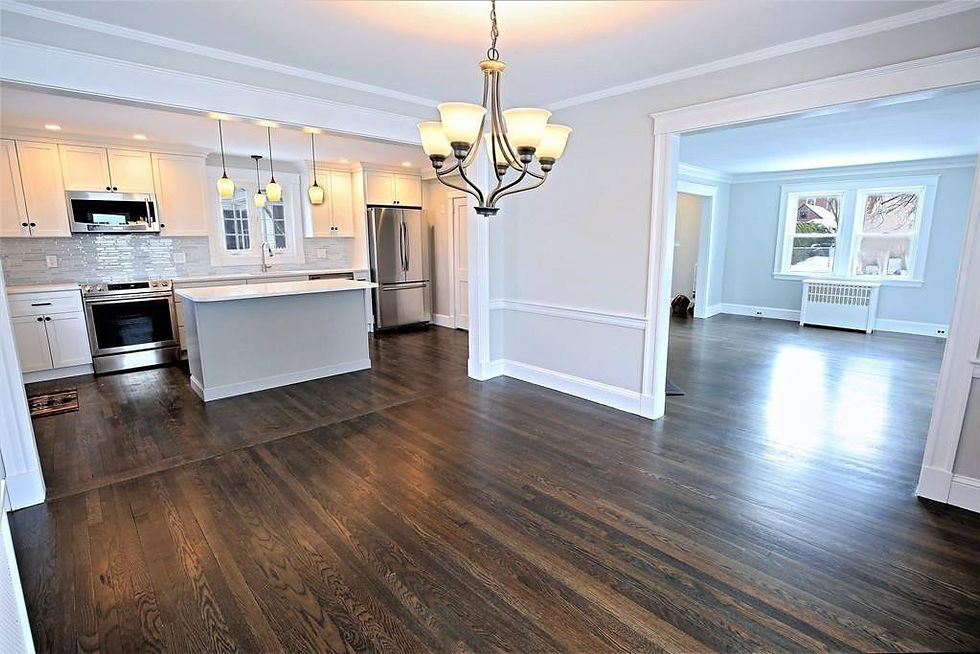IS WIDE PLANK FLOORING RIGHT FOR MY HOME? -SUBMITTED BY NEIL M.
- Thang Lam

- Jul 15, 2019
- 2 min read
Updated: Oct 11, 2019

Wide plank flooring is an in-demand flooring design element frequently requested in home remodels. In an average sized room, wide plank flooring can create the illusion that a room is larger than it is, often shows off the natural characteristics of the wood better than smaller planks, and depending on the size, can allow for faster installation times. Wide planks used to be found primarily in farmhouses, so initially they were associated with a cozy, informal design feel. Nowadays, with the various stain options, there is a much more modern, contemporary feel associated with solid hardwood flooring in wider planks.
When we talk about wide plank flooring, we are typically talking about planks with a width greater than 4 inches and up to 20 inches across. If you are considering replacing existing flooring with wide plank flooring, here are a few things to consider:
1) Wide plank flooring tends to shrink and expand a bit more than smaller-width plank flooring, mainly because there is more wood and less seems overall. A professional installer is recommended for this type of flooring to prevent unsightly gaps and/or buckling over time. If you are in an area of high humidity, however, you might want to consider engineered hardwood flooring in wider planks, which does not shrink/expand like solid hardwood flooring.
2) In small spaces, wide plank flooring can sometimes make the space seem even smaller, so for spaces that are already small, it is sometimes better to go with a slimmer plank size.
3) Typical high-end installation of wide plank flooring involves a two-step installation process- glue + nail assist (cleat or staple). This type of installation is recommended by the National Wood Flooring Association as it prevents the larger planked wood from permanently separating at the seams, exposing large gaps with changes in humidity and temperature. This two-step installation process costs more than narrow width plank installation. With narrow planks, you typically only need to nail (cleat or staple) down the plank. Cheaper wide plank flooring installations will use just this nail process, however, over time, because of the size of the plank, larger than acceptable gaps form that are not filled in with the expansion of the wood during humid months. In addition to the more expensive installation process, the wider planks themselves are often more expensive than planks that are under 5 inches.
If you are considering wide-plank flooring and it is in your budget, I highly recommend using a professional installer that is familiar with and uses the two step installation process recommended by the National Wood Flooring Association.




Comments